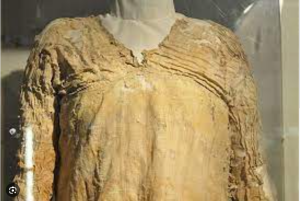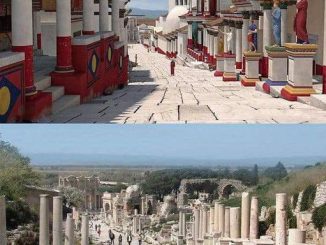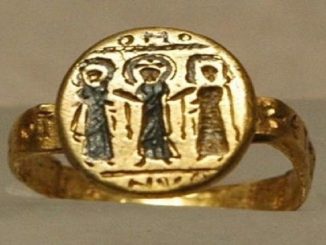A Linen Legacy
In the quiet sands south of Cairo, within an ancient tomb at Tarkhan, a discovery was made in 1913 that would only a century later be recognized for its monumental significance. Amidst the treasures unearthed was a piece of linen, unassuming in its presence yet extraordinary in its story. This wasn’t just any fabric; recent radiocarbon testing has confirmed it as the world’s oldest surviving woven garment, dating back more than 5,000 years. This remarkable find not only offers a glimpse into ancient Egyptian civilization but also redefines our understanding of the development of early textiles and clothing.
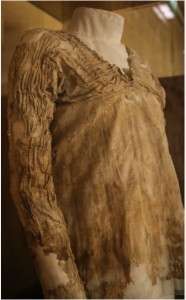
A Cloth Through Time
The Tarkhan Dress, as it is now known, defies the ages with its sophisticated craftsmanship. Despite its extreme age, the garment retains a design that echoes modern sensibilities—tailored with pleats and a v-neck, it speaks of a people who valued both form and function in their attire. The realization of its age and significance came about through meticulous radiocarbon dating, revealing a narrative woven into the very fabric of ancient Egyptian society.
For those eager to behold this testament to human ingenuity, images of the Tarkhan Dress offer a window into the past, showcasing its delicate construction and timeless elegance. It stands as a powerful reminder of the complexities and capabilities of our ancestors, challenging preconceived notions about the simplicity of ancient societies.
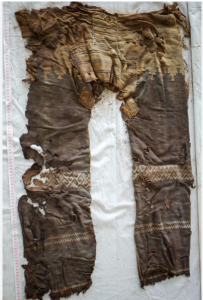
In a world where the past often seems disconnected from the present, antiquities like the Tarkhan Dress serve as a bridge between ages. They remind us of humanity’s shared heritage and the timeless aspects of human creativity and expression. However, the journey of the Tarkhan Dress from its burial site to the museum display also highlights the vulnerabilities of such artifacts. The risk of deterioration, theft, or loss makes it imperative for us to adopt measures to protect these treasures for future generations.
More Than Just a Garment
The discovery of the Tarkhan Dress extends beyond the confines of fashion or textile history; it serves as a cultural artifact that offers insights into the daily life, social structures, and technological advancements of ancient Egypt. The preservation of such a piece suggests the garment’s significance, possibly belonging to a person of high status or used for ceremonial purposes. Its survival through millennia highlights the ancient Egyptians’ mastery over linen production and garment making, a testament to their sophistication and understanding of materials.
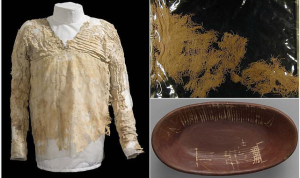
Preserving the Threads of Time
The preservation of the Tarkhan Dress underscores the broader challenge of protecting antiquities in a modern world. The garment’s journey from discovery to recognition illuminates the vital role that conservation science plays in our understanding of history. Antiquities, whether monumental stone structures or delicate textiles, face threats from environmental conditions, human interference, and the passage of time itself. The story of the Tarkhan Dress serves as a compelling call to action for the preservation of cultural heritage worldwide.
Efforts to safeguard such treasures require global cooperation and the application of advanced technologies in conservation. By supporting these endeavors, we ensure that future generations can explore, learn from, and be inspired by the rich tapestry of human history embodied in artifacts like the Tarkhan Dress. As we marvel at this ancient garment, let us also commit to the protection of antiquities, recognizing them as invaluable links to our collective past and as sources of knowledge and inspiration for the future.
In conclusion, the Tarkhan Dress is not merely an item of clothing but a bridge to the past, offering profound insights into the life and times of ancient civilizations. Its discovery and subsequent analysis highlight the importance of archaeological research and the need for vigilant conservation efforts. As we continue to unearth and understand the remnants of ancient societies, we must also dedicate ourselves to the preservation of these irreplaceable artifacts, ensuring that history’s fabric remains intact for generations to come
